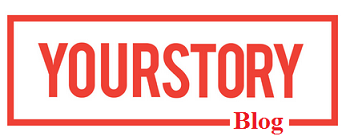
Engaging with a workplace health and safety consultancy can help organizations proactively manage risks, create a safer working environment, and foster a safety culture among employees.
Proactive partnerships with workplace health and safety consultants can significantly enhance your organization’s safety culture and compliance. Here are some tips to get the most from such partnerships:
Clearly define objectives
Clearly articulate your organization’s health and safety objectives. Whether it’s reducing workplace accidents, ensuring compliance with regulations, or improving overall safety culture, a clear understanding of your goals will help the consultant tailor their services to meet your needs.
Make your objectives measurable to track progress. For instance, instead of a vague goal like “improve safety,” specify measurable outcomes like reducing accidents by a certain percentage or achieving a specific compliance rate.
Select the right consultant
Choose a consultant with expertise in your industry and a proven track record. Look for relevant certifications and experience in implementing effective health and safety programs. Consider seeking recommendations or reading reviews from other clients. For instance, choose hr consulting services tailored to improve health and safety for small businesses if you are a sole proprietorship with less than 50 employees.
Verify that the consultant holds relevant certifications in health and safety. Common certifications include Certified Safety Professional (CSP), Occupational Health and Safety Technologist (OHST), or other industry-specific certifications.
Consider a consultant who embraces technology to enhance health and safety programs in today’s digital age. That could involve using software for incident reporting, data analysis, and training management.
Open communication channels
Foster open and transparent communication. Communicate your expectations, concerns, and any specific challenges your organization faces. Encourage the consultant to provide regular updates on their progress and share any emerging issues or recommendations promptly.
Assign a key contact person within your organization to interface with the consultant. That helps streamline communication and ensures that information flows smoothly between both parties. Foster a culture of two-way communication. Encourage the consultant to share insights, recommendations, and any emerging issues. Similarly, inform the consultant about organizational changes, new projects, or any health and safety challenges.
Leverage communication tools and technology to facilitate efficient information exchange. This could include project management software, collaborative platforms, and communication apps allowing real-time updates and document sharing.
Collaborative approach
Treat the consultant as a collaborator rather than an outsider. Involve vital organizational stakeholders, such as management, supervisors, and employees. A collaborative approach ensures the consultant understands your workplace’s unique dynamics and challenges.
Form a health and safety committee with representatives from different departments or teams. This committee can act as a liaison between employees and management, facilitating communication and collaboration on safety matters.
Facilitate knowledge transfer between the consultant and your internal team. That could involve training sessions, workshops, or collaborative problem-solving sessions. Building internal capacity ensures your organization can sustain and continually improve its health and safety initiatives.
Customized solutions
Work together to develop customized solutions. Generic approaches may not address the specific needs and risks of your organization. Tailor health and safety programs, training, and policies to fit the unique aspects of your workplace.
Conduct customized risk assessments for different departments or job roles within your organization. That allows for identifying specific hazards and developing targeted mitigation strategies that your organization will adopt from the hr support consultancy services.
Recognize and address behavioral aspects of safety. Customized solutions should consider the organizational culture, employee attitudes, and the psychological factors influencing safety behavior. Behavioral safety programs can be tailored to fit your organization’s unique context.
Training and capacity building
Invest in training for your employees and management. A well-informed workforce is better equipped to adhere to safety protocols. Additionally, build internal capacity by training key personnel to take on health and safety responsibilities within the organization.
Remember that workplace health and safety is an ongoing process and a proactive partnership with a consultant can be instrumental in creating a safer and healthier work environment.

